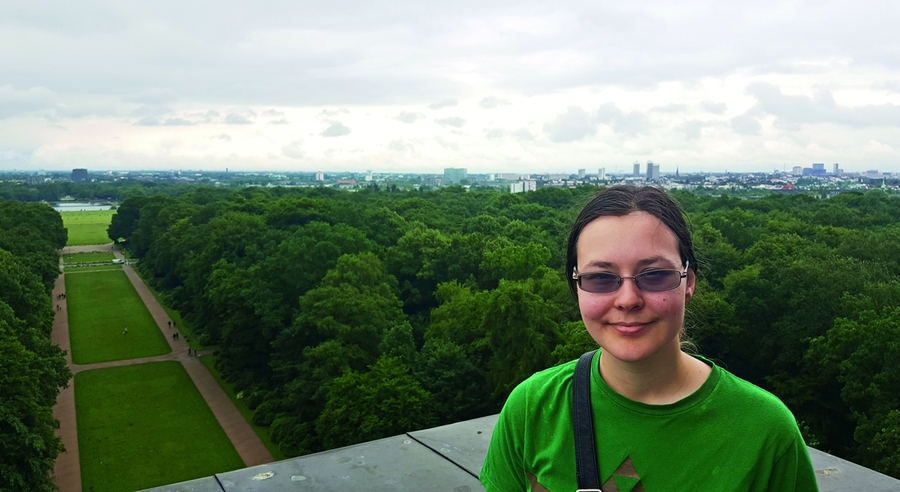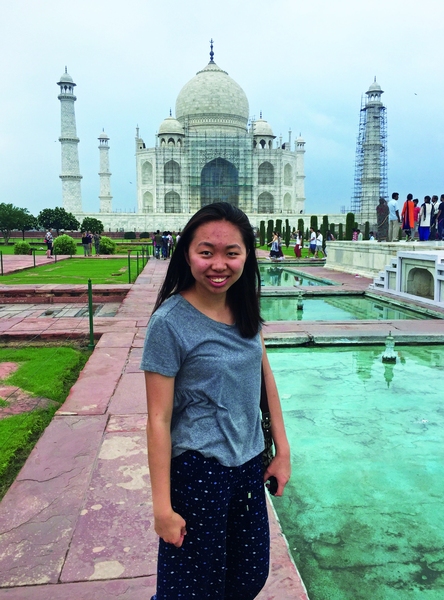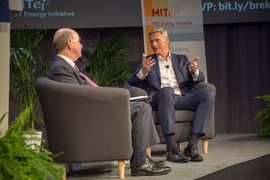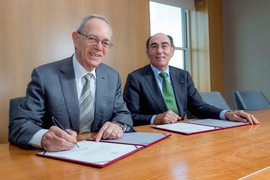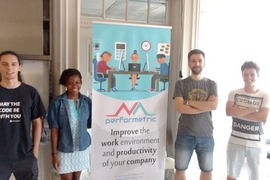MIT undergraduates who interned with MIT Energy Initiative (MITEI) member companies in summer 2017 had the chance to work abroad on a wide range of energy projects, from analyzing fuel additives to evaluating how new technologies might transform energy markets.
Along the way, the interns — all participants the MIT International Science and Technology Initiatives (MISTI) program — learned basic life lessons, experienced other cultures firsthand, and gained insights into the energy industry. This deep dive into the working world overseas is a hallmark of MISTI, the Institute’s renowned program in applied international studies.
“MISTI helped me explore the world and get a global perspective,” says Ignacio Ortega, who spent eight weeks interning at Iberdrola in Madrid. “That’s something I want to have because in the future I want to start my own company,” says the second-year mechanical engineering major, who plans to complete an energy studies minor and enter the energy industry.
This is the fifth straight year that MITEI and MISTI have teamed up to provide interested students with energy internships abroad. This summer, the partnership sent eight students abroad to MITEI members: six to Shell in India, one to Shell in Germany, and one to Iberdrola in Spain.
“MISTI opens the world to MIT students by offering a robust portfolio of possibilities in energy — from looking at solar energy in remote Himalayan villages that have no electricity to working in the research and development heart of Bangalore with global companies such as Shell,” says Mala Ghosh, managing director of MIT-India and MIT-South Asia, and MISTI liaison for the MISTI-MITEI internship program.
Ghosh notes that the MITEI interns were among roughly 50 MIT students who did energy-related work overseas during summer 2017 through MISTI. Overall, MISTI placed 1,250 students — 469 graduate students and 781 undergraduates — in internships and research posts around the world this year.
Professional skills for students
“It’s been an adventure,” says Carissa Skye, a third-year physics major working at Shell in Hamburg, Germany. Skye says the MISTI internship provided “a crash course on adult life” — from finding an apartment to filling out German bank forms — and also made it possible to gain professional experience applying machine learning algorithms to the task of predicting the fluctuation of energy-related stock prices.
The data analysis skills acquired for that project will be crucial for a career in physics, Skye says. “Data analysis is more and more important in the world of physics as physics experiments get bigger and more technical,” says Skye, noting that a wealth of data is pouring in from CERN and other particle accelerators. “Physics education on the undergraduate level doesn’t have a good way of giving us that.”
Amy Zhang, a second-year computer science major, says working for Shell in Bangalore, India, gave her a new view on her career options. “It was interesting to work in a really interdisciplinary field — using data mining for a company not thought of as a computer science company,” says Zhang.
Zhang’s main project for Shell was developing a computer program that can identify potential fuel additives. “Long-term screening for fuel additives is really expensive, both in financial terms and in terms of time,” she says. “I was part of the computational chemistry team using machine learning to classify molecules on the computer so they wouldn’t have to test each fuel with every additive.”
Zhang says she enjoyed the MISTI internship in part because she got to work on a project with real-world applications. Since the fuel additives may one day show up in consumers’ gas tanks, she says, “what I was working on has the potential to impact a lot of people.”
Fresh perspectives
Internships such as these show students that it’s possible to work for a corporation and still do experimental research, says Ghosh. And, while students gain new skills and international experience, sponsors gain fresh insights into their own energy challenges.
“MIT students bring their knowledge and intellectual capacity, as well as their innovative spirit, to Shell. This is very much appreciated by our Shell colleagues, who are also innovating on a daily basis for more and cleaner energy resources,” says Haibin Xu, external research and innovation manager for Shell in the United States.
“We rely on programs like MISTI to help connect us with students from across the globe to not just intern for us but also to teach us their views,” says Beatriz Crisóstomo Merino, head of innovation management at Iberdrola. “Iberdrola enjoys the fresh perspective, ideas, hands-on skills, and enthusiasm of MIT students. Students and hosts can contribute to innovative solutions together.”
For example, Ortega spent much of his internship working with Iberdrola researchers on a white paper exploring how Iberdrola could use blockchain — a digital ledger technology — for such energy-related transactions as buying and selling energy to the grid. “This would enable the utility to better price energy they’re selling based on demand and supply in the market,” says Ortega. “It furthers the efficient use of energy.”
Skye, meanwhile, found that Shell in Germany is working to meet government regulations that call for an 80 percent cut to carbon dioxide emissions from the home heating sector by 2050. To that end, Skye worked on a project (in addition to the one that involved data analysis) to standardize the reporting of experimental data related to the efficiency of solar panels.
Notably, Skye was surprised to learn that Germans seemed to accept climate change and the need for alternative sources of energy as indisputable facts; in the United States, Skye finds that people are less convinced. “In Germany, they know solar needs to start now, wind power needs to start now. It’s interesting to see that cultural difference,” says Skye.
While her main project centered on traditional fuels, Zhang was also involved in a smaller project modeling how lithium-sulfur batteries charge and discharge over time — work applicable to the storage needs of such renewable energy sources as wind and solar. “Working in an area that’s making the possibility of sustainable energy a reality was pretty cool,” says Zhang.
For the companies, sponsoring interns not only advances projects like these, but also provides a platform for recruiting, access to MIT’s research community, and opportunities to develop collaborative ventures with MIT faculty and students. “Our host companies are excited to work with our students,” says Ghosh. “Our MITEI interns have outperformed expectations.”
That’s why plans are already under way for MISTI-MITEI to support more internships next year. “Companies are looking to increase their numbers and expand into a variety of countries, including Brazil, China, Mexico, and the U.K.,” says Ghosh.
The bottom line, she says, is: “Senior researchers come back asking for students to continue research remotely while back at MIT, co-author papers, join as full-time hires, and to send more student interns each year. They are impressed with the caliber of work.”
Embarking on its 35th year, MISTI empowers students to make a difference in the world by matching them with tailored, hands-on projects across the world. From designing seismic imaging tools in India to expanding electricity grids in Brazil to developing high performance industrial lubricants in China, MISTI interns are working with international peers and companies to help solve the world’s energy challenges. The program is currently accepting applications for internships with Shell and Iberdrola in Brazil, China, Germany, India, the Netherlands, Mexico, Scotland and Spain through the MITEI-MISTI collaboration.
